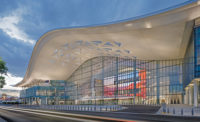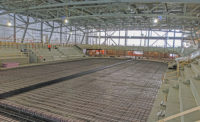At the end of each year, I receive a new calendar from Hoffman Construction Co., Portland, Oregon. It features simple pictures drawn by employees’ young children depicting how to work safely on construction sites. The calendar is a terrific way to communicate how the ramifications of safety and health practices extend beyond jobsites, projects and companies to families and future generations of workers.

GAMBATESE
Sustainability principles incorporate a similar perspective on the value of life. The World Commission on Environment and Development describes sustainable development as a project approach that “meets the needs of the present without compromising the ability of future generations to meet their own needs.” Sustainability is both broad and long- term.
Where does the concept of construction worker safety and health fit in? It is part of the social aspect of sustainability. Like protecting and conserving environmental resources, sustainability values the stewardship of human resources.
We all know there are financial implications when workers are injured or killed. The financial impact can significantly influence the economic vitality of a firm and a community and, thus, sustainability over the long term.
The construction phase of a project is when most injuries and fatalities occur, and it must be included in the sustainability assessment. The industry has been successful in developing many innovative designs and construction practices to improve energy efficiency, resource use and environmental impact, but some green design features increase jobsite hazards.
For example, the greater use of skylights and atria in buildings increases fall hazards on a project. There also are greater risks of musculoskeletal injuries from increased jobsite manual handling and separation of materials to meet project recycling goals.
There currently is a blind spot in sustainable design practice when it comes to worker safety and health. Tremendous focus is placed on materials, energy and the environment, but designers typically give little, if any, consideration to the safety and health of the people who install the green features or build the projects.
This approach needs to change. Rather than focusing solely on energy and the environment or striving to gain points on a rating system, designers also should develop better designs that help prevent injuries during construction, as well as during operations and maintenance after project completion.
There is growing interest in worker safety and health on green projects. For example, the National Institute for Occupational Safety and Health (NIOSH) is leading the discussion through an upcoming national workshop on how to make green jobs safe. The workshop integrates the concepts of prevention of injuries and deaths through better design and the concepts of sustainable design.
A system also is being developed to rate projects according to their safety and health programs. The rating system is designed to be implemented alongside the Leadership in Energy and Environmental Design rating system, created by the U.S. Green Building Council.
This discussion raises the issue of whether any building should be called sustainable if an injury or fatality occurs during construction. One recent study published by the American Society of Civil Engineers compared green and non-green projects with respect to safety performance. The results show there was no statistical difference in the lost-time injury rates between the two types of projects.
Sustainable buildings should have a better construction safety record than ordinary buildings, and that performance should become part of sustainability rating systems. After all, sustainable concepts start with the health and welfare of humans.



Post a comment to this article
Report Abusive Comment